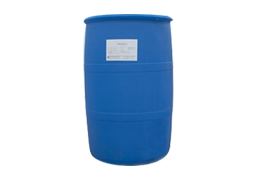Surfactant can promote the deformation or destruction of the surface by adsorbing on the structural defects on the surface of mineral solid particles. That is, the adsorption of grinding aid molecules on particles reduces the surface free energy of particles or causes dislocation migration of surface lattice, resulting in point defects or line defects, so as to reduce the strength and hardness of particles and promote the generation and expansion of cracks. ② Klipel's "pulp rheological regulation" theory holds that grinding aids regulate the rheological properties of slurry and the surface electrical properties of particles, reduce the viscosity of slurry, promote particle dispersion, improve the fluidity of slurry, and control the agglomeration and adhesion between particles, particles and grinding medium and lining plate.

Surfactant is a kind of functional fine chemicals. Because of its amphiphilic structure and properties, surfactants self polymerize in the solution to form various forms of ordered molecular assemblies, such as micelles, reverse micelles, vesicles, liquid crystals and so on. The particle size or aggregation molecular layer thickness of these molecular ordered assemblies are close to the order of nanometer, which can provide suitable places and conditions for the formation of "quantum size effect" ultrafine particles, and the molecular aggregates themselves may have similar "quantum size effect".
Therefore, the ordered molecular assemblies of surfactants exhibit various practical functions, such as emulsification, solubilization, wetting, adsorption, permeation, dispersion, defoaming, thickening and lubrication. They are used as auxiliaries for printing and dyeing, pesticide emulsifiers, dispersants for polymer emulsion polymerization, and can also be widely applied in mining, petroleum, emulsion polymerization and other industries.
The dilute solution of surfactant obeys the law followed by the ideal solution. The adsorption capacity of surfactant on the solution surface increases with the increase of solution concentration. When the concentration reaches or exceeds a certain value, the adsorption capacity will not increase. These excessive surfactant molecules are disordered in the solution, or exist in a regular way. Both practice and theory show that they form connective bodies in solution, which are called micelles.